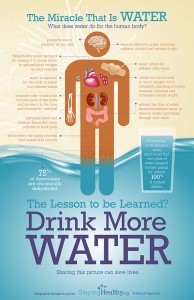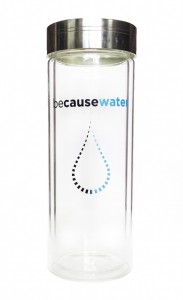Toxins in Personal Care Products: How to Keep Them Out of Our Waterways
by: Amanda Sebert
When astronomers search for life on another planet, what they are really looking for is water. Water is essential to all life, and unless it is clean, we cannot consider it water. As a species, we have learned from our evolutionary history, and from recent tragedies like the Ebola outbreak in West Africa,
 that polluted water sources can cause significant harm to both human health and the environment. Keeping dangerous chemicals out of our water sources is an obvious goal, but in the toxin-filled world in which we live, it can be harder than you might think.
that polluted water sources can cause significant harm to both human health and the environment. Keeping dangerous chemicals out of our water sources is an obvious goal, but in the toxin-filled world in which we live, it can be harder than you might think.
Everything we put on and in our bodies will ultimately end up in our waterways. It can be difficult to see the connection between products we use on our bodies and their affects on our environments. The lotion that helps brighten your skin may contain parabens that are disrupting your hormones. Extensive scientific studies have shown that hormone systems of wildlife are disrupted by chemicals from personal care products that end up in water bodies after being rinsed down the drain. These same water sources may be the drinking water supply for hundreds or thousands of people. One need not be a scientist to understand the connection between our health and our water sources.
Personal care products are those used for hygiene and beautification. We use personal care products such as, toothpaste, hand soap, mascara, and deodorant. Everyone who uses these products are exposed to dangerous toxins like parabens, phthalates, formaldehyde, triclosan, tocopheryl acetate, and many more. The Campaign for Safe Cosmetics has found that the average American uses 9 personal care products daily. In these 9 products, there are approximately 126 unique chemical ingredients. Scientific research is lacking when it comes to understanding how the chemicals in these products interact with each other or with the other toxins we are exposed to in our daily lives.

The Environmental Working Group, an organization made up of scientists, policy experts, lawyers, communication experts and programmers, has found that more than one-third of all personal care products contain at least one ingredient linked to cancer. Unfortunately, cancer is not the only health problem; toxins in personal care products have been linked to many different health issues which include birth defects and reproductive issues, respiratory conditions like asthma, behavioral disorders, hormone disruption, nervous system problems, and mental health issues such as depression. Sometimes a clear link exists between a health issue and a toxin, but that is not normally the case. For example, formaldehyde and formaldehyde-releasing preservatives are used in many personal care products, particularly in shampoos and liquid baby soaps. The formaldehyde and preservatives are used to prevent bacteria growth in these products, and these chemicals can be absorbed through the skin. Some evidence suggests that these absorbed chemicals may lead to allergic skin reactions and cancer. (Campaign for Safe Cosmetics).
Toxins in personal care products that cause adverse health impacts end up in our waterways. Thanks to modern science, public drinking water sources have the capability of removing most of these toxins before they reach consumers. This does not help the wildlife who come into contact with polluted water before it is treated. Individuals and communities who have private wells are especially at risk from toxins in water. These communities that rely on private well water may not have sophisticated water treatment systems to filter out these potential toxins.
So how can we protect ourselves from harm and also keep toxins from personal care products out of our waterways? The European Union has banned over 1,132 chemicals from personal care products of which the US has only banned 11. There is no reason for certain harmful toxins to remain in our products if safer alternatives exist and are readily available. Getting big businesses to change their ways can be a difficult and daunting task. We must use our strength in numbers to induce change by choosing personal care products that are safe for bodies and will not pollute our waterways. Visit the Skin Deep Database to see if your products are safe. Check out the Action Alerts from the Campaign for Safe Cosmetics where you can tell cosmetics companies and elected officials that safe cosmetics are important to you. We must press for legislation that: (1) requires product manufacturers to use safer alternatives (2) imposes broad regulations that protect human health and the environment and (3) keeps dangerous toxins out of our waterways.



